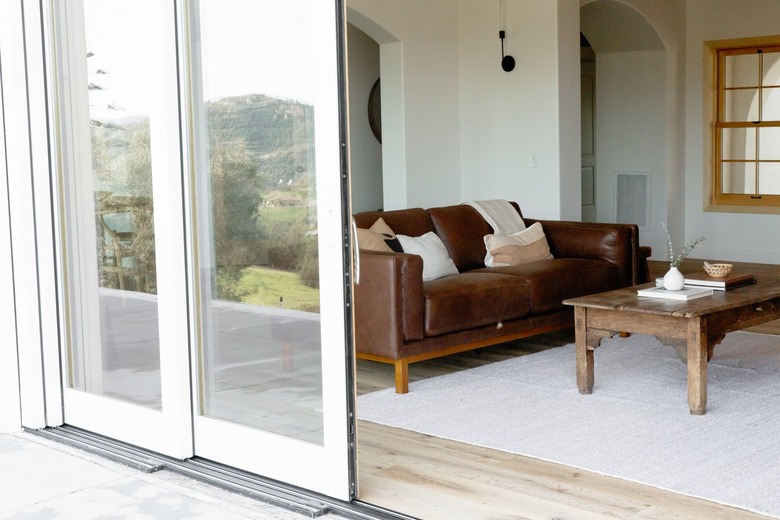How To Keep Rainwater From Coming Through Entrance Doors In Your Home
We may receive a commission on purchases made from links.
Your home is designed to protect you from the elements, but what happens when your door lets in the rain? Your entry doors can fail to block water for several reasons. The first step is figuring out how the rain is entering your home.
Leaking Drip Cap
Leaking Drip Cap
The drip cap is an L-shaped piece installed above the door. The vertical portion attaches to the exterior wall behind the siding, while the horizontal portion sticks out over the door. It helps direct water away from the door and prevents it from seeping behind the siding.
If your door doesn't have a drip cap, you could get water in your door along the top edge. A drip cap that's not properly installed could also allow leaks. It should slope away from the house slightly, and there should be a gap between 1/4 inch and 3/8 inch between the bottom edge of the siding and the drip cap.
Installing a drip cap if you don't have one or replacing a damaged one can help fix the leaks. You'll need to remove the piece of siding above the door to install the new drip cap. Once it's installed, you can reattach the siding. Drip caps can vary depending on your door, so check with the manufacturer for a replacement.
Failing Caulk Along the Trim
Failing Caulk Along the Trim
Caulk around the door trim helps keep water from entering through the joints. It also helps insulate around the door and helps keep insects out of your home. However, caulk doesn't last forever. How long it lasts varies based on the durability of the caulk and how well it was applied.
If the water comes in along the sides or top of the door around the trim, head outdoors and inspect the caulk at the joints of the trim. If it's cracked, peeling, or missing in spots, it's the likely culprit for your door leakage.
The solution is to replace the caulk along the trim. To caulk the door, you'll first need to remove all the old caulk. Then, you can apply new door caulk to seal the gaps properly. While you're at it, check your other exterior doors and windows, as they might be ready for new caulk as well.
Improper Threshold Slope
Improper Threshold Slope
Your exterior threshold should slope away from the house slightly to cause the water to flow away from the door. If it doesn't or it slopes toward the home, the water can pool or run back toward the door, which can let it run inside your home. The water might flow in when you open the door, or it could leak in if there's a gap at the bottom.
Replacing the threshold can fix this issue. You'll need to cut the old threshold and pry it out of the entryway. Then you can install the new threshold.
Stoop or Patio Pooling
Stoop or Patio Pooling
Standing water on your stoop or patio can cause leaking issues around your door. This can happen if your patio or stoop slopes toward your door. This prevents the water from draining properly, and it could pool up high enough to enter at the bottom of the door.
You can add a drainage trench in your patio to help direct water away from your house. Another option is to add a cement overlay to correct the slope so water runs away from the house. These fixes are more complex, so consider hiring a contractor to do the work.
Sagging or Bowed Door
Sagging or Bowed Door
If your door is sagging, bowed, or installed incorrectly, it could leave a gap at the top or bottom where rain can enter. You can usually see the gap during the day since sunlight will shine through it. The gaps also let in bugs and hot and cold air from outside.
If the gap is caused by an installation issue, reinstalling the door correctly may fix it. If the door is warped or damaged, you might need to replace it to get a proper fit. Closing the gap should stop the leaking.
